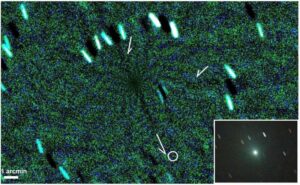
Astrophysicist Neil deGrasse Tyson has shed light on a compelling theory suggesting the existence of a hidden planet within the Kuiper Belt, a region of our solar system located beyond Neptune. This discussion has gained traction as new evidence emerges, prompting scientists to reconsider the dynamics of our celestial neighborhood.
During a recent interview, Tyson elaborated on the hypothesis that a yet-undiscovered planet may be influencing the orbits of various celestial bodies in the Kuiper Belt. This region is home to numerous icy objects and has been less explored compared to other areas of our solar system.
The theory gained momentum following observations that certain trans-Neptunian objects exhibit unusual orbital patterns. These patterns suggest that their movements may be affected by the gravitational pull of a larger, unseen planet. Tyson pointed out that this hypothetical planet, often referred to as “Planet Nine,” could be significantly more massive than Earth and orbiting the sun at a considerable distance.
Tyson emphasized that while the existence of such a planet remains unconfirmed, the evidence is compelling enough to warrant further investigation. He noted that the search for Planet Nine is part of a broader effort to understand the complexities of our solar system. The scientific community is eager to explore these theories and gather more data, which could reshape our understanding of planetary formation and dynamics.
Implications of a Hidden Planet
The potential discovery of a hidden planet would have far-reaching implications for astrophysics and our understanding of the solar system. If confirmed, it would not only change the way we view our celestial neighborhood but also prompt questions about the formation of planets and their interactions over billions of years.
Tyson pointed out that the search for Planet Nine could lead to discoveries beyond just identifying a new planet. It could enhance our knowledge of the Kuiper Belt itself and reveal more about the early solar system’s history. As researchers employ advanced telescopes and analytical techniques, they hope to locate this elusive planet.
The concept of a hidden planet is not entirely new. In fact, the idea has been circulating among astronomers for several years, gaining traction as astronomers continue to collect data on distant objects in the Kuiper Belt. Observations from powerful telescopes have revealed a number of interesting anomalies that could hint at the presence of an additional celestial body.
A Call for Continued Research
Tyson urged the scientific community to remain committed to exploring these theories further. “The universe is vast and full of surprises,” he stated, highlighting the importance of curiosity-driven research in unlocking the mysteries of our solar system.
As technology advances, astronomers are increasingly equipped to search for these distant worlds. The potential for new discoveries in the coming years is high, and Tyson’s insights remind us of the importance of keeping an open mind as we delve deeper into the cosmos.
In conclusion, while the existence of a hidden planet beyond Neptune remains unverified, the growing body of evidence continues to fuel interest and exploration within the scientific community. The quest for knowledge about our solar system is ongoing, with each new discovery contributing to the rich tapestry of our understanding of the universe.






